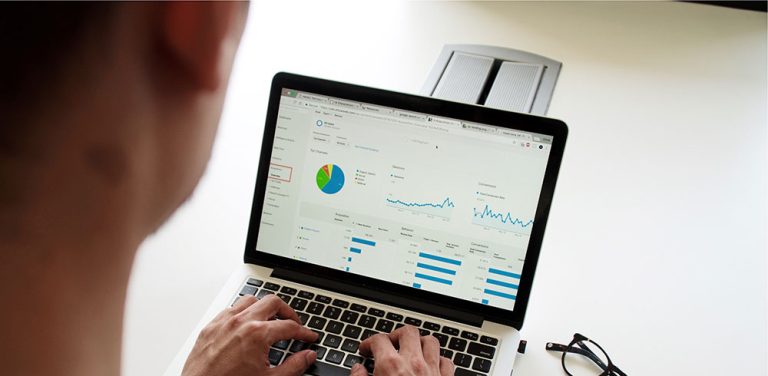In 2020, a roundup of go-to productivity tips for working from home was one of our most popular pieces on Forbes. Nearly one year later, as many of us prepare to shift to a hybrid work environment, Google’s Executive Productivity Advisor offers a fresh set of tactics for how to prepare.

Many businesses are in the process of updating everything from meeting rooms to open-plan work areas to outdoor gathering spots. Be sure to know how your workplace is changing and what tools are available to you.
getty
Last April, I wrote about how to make “work from home” work for you, gathering up my tips for staying productive and grounded when your living room or bedroom turns into your office. I leaned on my experience at Google, where I advise people on how to make the most efficient use of their time. Many are still working from home, but they’re also wondering how work will change in 2021 and beyond. The consensus among many analyst firms is that hybrid work—a mix of work days spent at home and in the office—will become the new normal for occupations where it’s an option.
So how do you get ready for this new hybrid work reality? By using the same tools and insights that gave you better control over your time and working environment in the pandemic. Here’s how.
Absorb the lessons of work-from-home
Table of Contents
Try to replicate your productivity wins when you return to the office. For a lot of people, working from home gave them some flexibility in how they divided their time and attention throughout the day. They found their natural work rhythms, blocked off their calendars during peak focus times, and tackled emails and meetings during a different chunk of the day.
But many of us couldn’t quite conquer our calendars. Our work days became longer and more fragmented. Video meetings—with more frequency, attendees, and time zones—stretched our days at both ends, and as the personal and the professional melded, we saw more interruptions. When your child’s learning device disconnects from WiFi, or the doorbell rings, you have to step away from the virtual office.
So, as many of us prepare to shift to a hybrid model of working, the first thing to do is make an inventory of everything that worked (and didn’t work) for you during work-from-home. For example, did you find that working earlier in the morning and taking a midday workout break made you more or less productive?
Related: 8 tips for getting it done when working from home
Plan and theme your days
Planning and theming your days will help you maximize your time in both places. For example: Your team might designate two days a week where everyone comes into the office. These are the days to schedule bigger group meetings, 1:1 coffee chats to maintain and build relationships, and catch-ups on shared projects. At least one day of the week could be a no-meetings day, affording everyone some focused time to concentrate without the distraction of running between rooms or logging into virtual meetings. You might want to also designate your own work-from-home days—perhaps when you’re responsible for picking your kids up from school and need to maximize your working hours.
If you’re given the choice of which days you spend where, think carefully about your productive rhythm throughout the week. If Monday is your “ramp-up” day and it’s heavy on meetings to begin with, that might be best spent in the office. On the other hand, if Friday is your “consolidation” day, work from home and tackle those heads-down tasks such as responding to non-urgent emails or writing a blog post. A lot depends on your specific home and office environments. Your themes should make the most of what each place has to offer.
Related: How to set your default working hours in one easy step
Know your tools and spaces
Last year, many of us began to take greater advantage of the different settings in our video conferencing software, calendars, and inboxes. We learned how to record meetings, blur backgrounds, or set up custom rules and filters for our emails. Being tool-savvy will continue to be important as we bridge two very different contexts. Consider setting working hours and availability in your calendar, so that your colleagues know when you can best be reached.
Likewise, as you head to the office again, take time to assess your new workspace. Many businesses are in the process of updating everything from meeting rooms to open-plan work areas to outdoor gathering spots. Be sure to know how your workplace is changing and what tools are available to you. Will you need to book your desk? Will it have the same setup you’re using at home? Are collaboration spaces available for team brainstorming? How will your team agree on how, when, and where they come together?
Understand how you and your team work

Now is the time to establish fresh ways of working and collaborating that cater to different time zones, as well as respect individual working styles and personal obligations.
getty
One positive development in our nearly year-long experiment in remote working has been the way video meetings became more inclusive of global, remote teams. With the shared informality of seeing each other’s homes and exchanging ideas about how to work better, we gained empathy for our colleagues. As we glimpsed each other’s lives—babies on laps, dogs on couches, or maybe grandparents making guest appearances—we got a new perspective on our teammates as whole human beings. As you head back to the office part-time, see if you can find ways to sustain the camaraderie and empathy that came out of this shared experience.
As we all gear up for the next phase in the evolution of work, it’s a great opportunity to develop habits that help us deliver our best. Planning and intention go a long way.
At Google, we already have some good data on how to bring out the best in your teams. Some years ago, Google completed a multi-year research study into high-performing teams and found that they all had five elements in common: psychological safety, dependability, structure and clarity, meaning, and impact. As you bridge the remote and in-person worlds, are you setting yourself and your team up for success? Do you have a set of team norms? Do you understand each other’s working styles and productivity zones?
Maybe you start offering two options for training and all-hands meetings, each at a different end of the work day. Maybe you implement “No-Meeting Fridays.” Not only do these changes cater to different time zones, they respect our individual working styles and personal obligations. As teams come back together in the office—at least part of the time—it’s a chance to establish fresh ways of working and collaborating that are based on the lessons of the last year.
Related: This new guide from Google offers 9 tips for more productive video meetings. Download for free
Allow for free time
A lot of us are terrible at taking breaks when we work from home. We bridge the physical distance by staying plugged-in all the time. Much research suggests, however, that you’re more productive when you take regular breaks to recharge. I like to use the pour-over coffee analogy: when you let things steep a little, you end up with a richer, deeper experience. The same is true for getting work done.
As you think about setting up your hybrid work week, don’t forget to budget some blank space on your calendar. I’m not a fan of scheduling breaks, since it can feel like yet another obligation. But make sure you have some time in your day for lunch, to take a quick walk, or grab a coffee—whether it’s in the office or while you’re at home.
As we all gear up for the next phase in the evolution of work, it’s a great opportunity to develop habits that help us deliver our best. Planning and intention go a long way. I often remind friends and colleagues that personal productivity is not just about how much you get done in a day. It’s about getting the things done that matter most for your day.
Read this next: Today, we’re excited to announce new additions to Google Workspace that will further empower all the ways work happens—and deepen its impact—in an ever-changing world.







